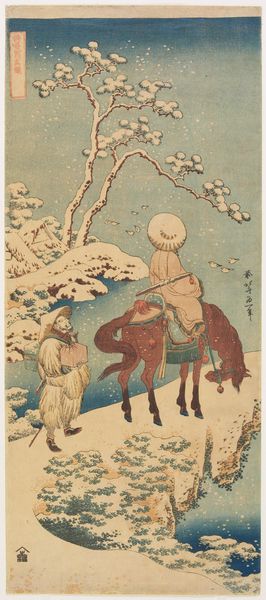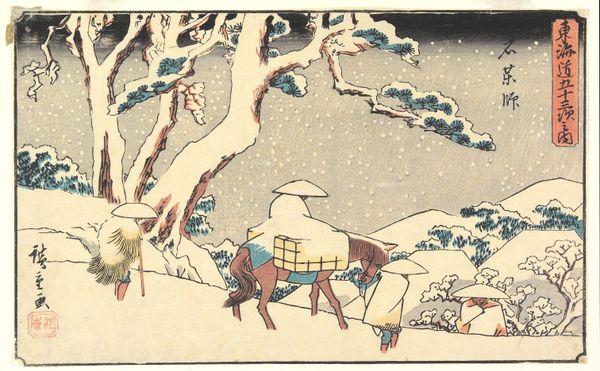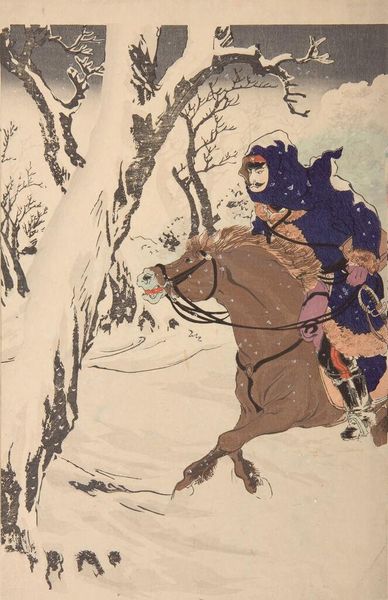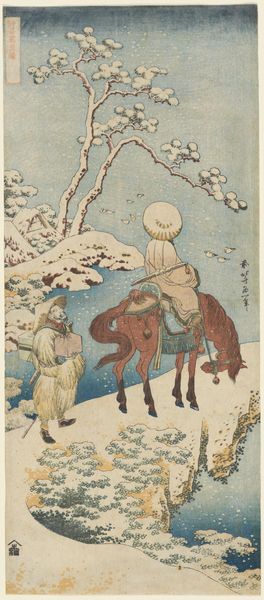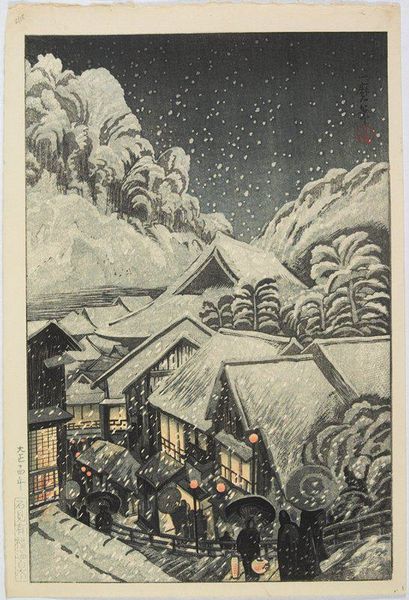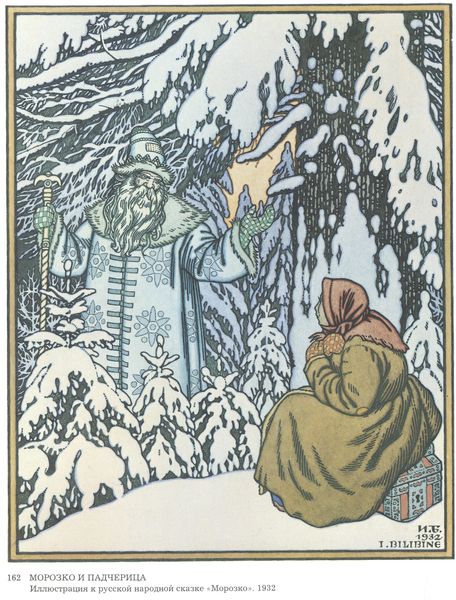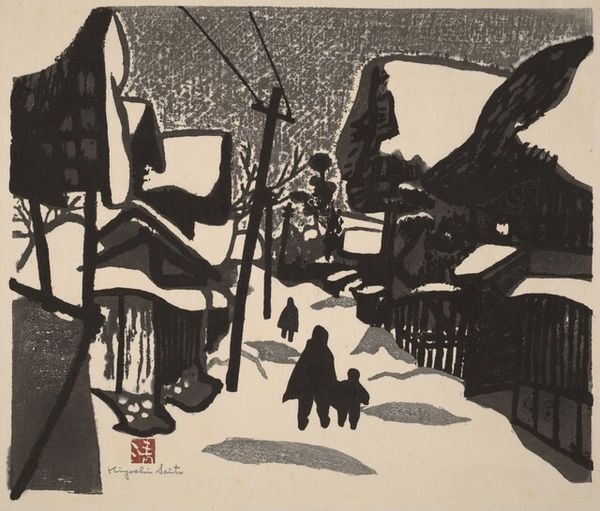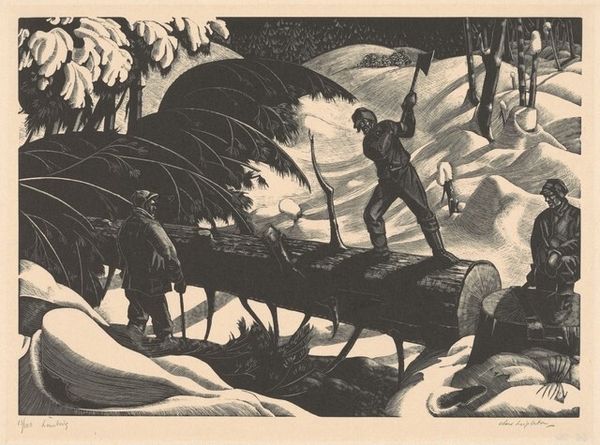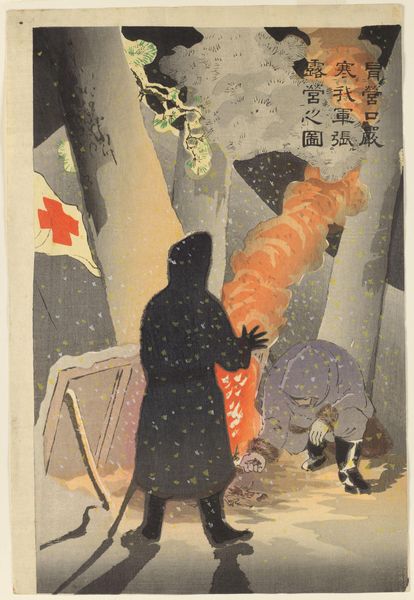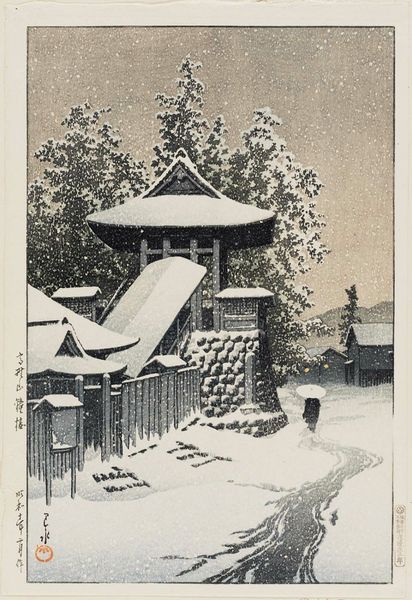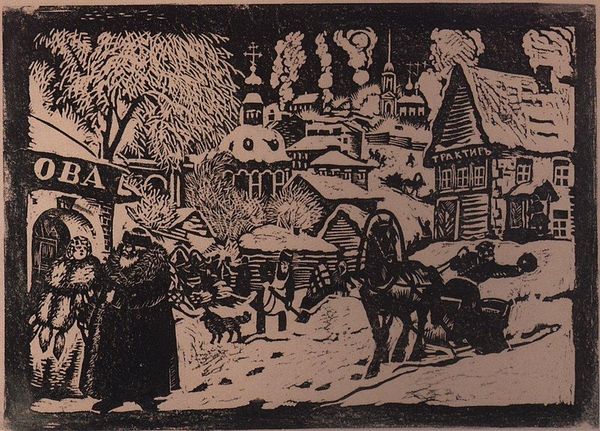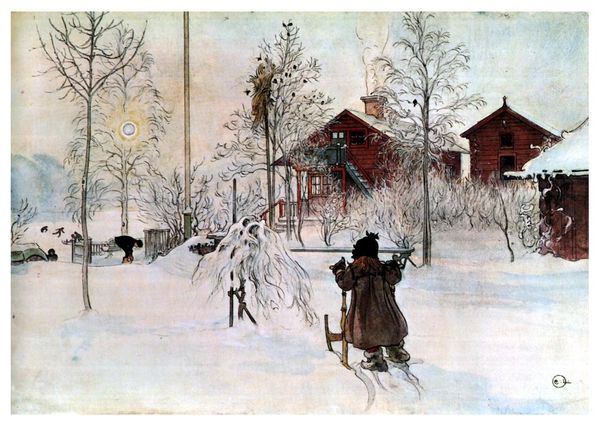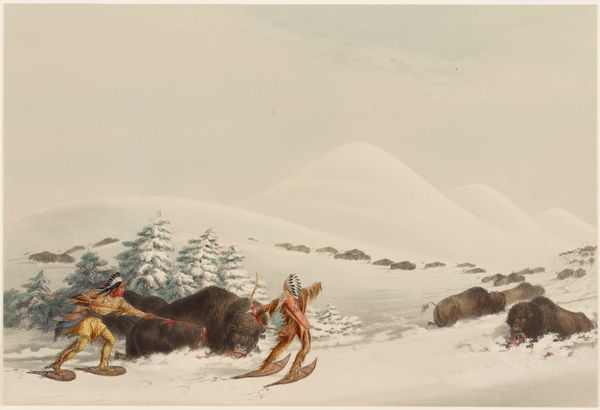
drawing, mixed-media, watercolor
#
drawing
#
mixed-media
#
medieval
#
narrative-art
#
landscape
#
figuration
#
watercolor
#
russian-avant-garde
#
watercolour illustration
#
mixed media
#
watercolor
Copyright: Public domain
Curator: This mixed-media work, primarily watercolour, is titled "Illustration for Alexander Pushkin's 'Fairytale of the Tsar Saltan'" created in 1905 by Ivan Bilibin. Editor: It’s quite haunting. The color palette feels muted and icy, reflecting a rather somber atmosphere, despite being an illustration for a fairytale. There's a stillness, a silence emphasized by the snow. Curator: Bilibin was heavily influenced by Russian folklore and medieval art. You can really see how he incorporated those elements in the stylised landscape and the figure's elaborate robes. The narrative is pulled from Pushkin, grounding it firmly in Russian cultural identity. It’s interesting how he used the "Fairytale" to talk about Tsarist times. Editor: The Tsar himself seems almost detached, lurking in the corner while a wild boar enters the scene. What does the boar represent? It introduces questions of power and control. Is it a symbol of something repressed about to be unleashed, about class struggle? The use of this fairytale context is really making me question the status quo of this artwork, which speaks so loud to this. Curator: That is astute, connecting this visual with potentially explosive sociopolitical contexts. Remember that 1905 was a period of great upheaval in Russia, marked by revolution and social unrest. Bilibin, through seemingly innocent fairy-tale illustrations, could be commenting on the precariousness of Tsarist authority, but that’s for us to figure out. I find him rather revolutionary for the avant-garde style. Editor: Absolutely! His unique perspective places him on the precipice between traditional imagery and burgeoning sociopolitical resistance. I really think it challenges how visual culture can also take on the powers that oppress. Curator: Exactly. The work becomes a quiet rebellion, where a folk-tale aesthetic can become charged with meaning and comment about real struggles of a specific historical setting. Editor: It really gives the old a new reading, showing it under new lights. Curator: Indeed, and seeing it today forces us to consider not only its original context but also its ongoing relevance to the powers shaping our present.
Comments
No comments
Be the first to comment and join the conversation on the ultimate creative platform.
